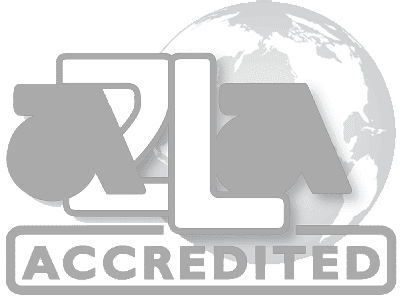What Is Microhardness Testing?
Microhardness testing measures how resistant a material is to indentation on a small scale. It’s used when the area of interest is too small or thin for standard hardness tests, such as coatings or surface treatments.
Unlike macro-scale hardness tests, which may reflect the properties of a larger section or bulk material, microhardness testing focuses on very localized areas. This makes it especially useful in materials science, quality control, and failure analysis. When the coating or surface layer matters, microhardness helps confirm whether it’s been applied or treated properly.
Omega Research performs microhardness tests in accordance with recognized standards including ASTM E384, ASTM B578, ASTM E92, and ASTM E140.
Importance of Microhardness Testing
At small scales, inconsistency is easy to miss but costly when it leads to part failure. Microhardness testing also helps verify that surface treatments and coatings are doing what they’re supposed to do and picks up on irregularities that could go unnoticed in bulk hardness testing.
Microhardness testing is essential for applications where conventional hardness testing can’t provide accurate results. These include:
- Thin coatings or surface treatments
- Small parts or micro-components
- Surface gradients in treated metals
Because these zones are often just a few microns thick, microhardness testing gives insight into localized performance where failure could begin. It’s especially useful for verifying the effects of processes like carburizing, nitriding, plating, or heat treatment, critical steps in industries like aerospace,
How Omega Runs Microhardness Testing
Omega’s microhardness testing lab is equipped for accurate and repeatable microhardness testing based on ASTM E384, ASTM E92, and ASTM B578 methods. Here’s how the process works:
- Precision Load Control: We apply controlled forces, Omegas approved ranges are HK25, HV100, HK100 and HK500 using Vickers or Knoop indenters depending on the application and sample geometry.
- Microscopic Inspection: After applying the load, we use top of the line Qness robotic hardness testers with high-magnification to measure the diagonal of the indentation to calculate hardness.
- Compliance with Standards: Every test adheres to the correct method—ASTM E384 for general microhardness testing, ASTM E92 for metallic materials, ASTM B578 for electrodeposited coatings, and ASTM E140 for hardness conversions.
- Documentation and Traceability: Results include hardness values, load applied, indentation measurements, and all required information. We can test across a full surface profile or on just a small portion of a supplied sample.
Why Choose Omega for Microhardness Testing
Not all labs have the tools or training to run microhardness tests properly. It’s a sensitive process that demands attention to detail, especially when the sample geometry is small or coatings are thin. We’ve refined our approach to eliminate measurement errors and maintain tight tolerances.
Our lab follows ASTM E384, ASTM E92, ASTM B578, and ASTM E140 to ensure every result is dependable. When your specs call for critical hardness profiles, we give you the clear, supported data needed to qualify suppliers, prove out processes, or solve field failure.
Omega Research’s attention to sample prep, method selection, and reporting clarity ensures that the results reflect what’s actually happening at the surface level. Our team helps clients interpret data and spot inconsistencies in coatings, treatments, or material behavior before they become field failures.


